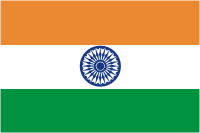 Mumbai is India's economic heart and most influential city. It is also where the second largest movie-making industry in the world is located, which sort of makes it both the New York and Los Angeles of India.
Mumbai is India's economic heart and most influential city. It is also where the second largest movie-making industry in the world is located, which sort of makes it both the New York and Los Angeles of India.One of the things which I have really struggled to fully understand during my stay here is the depth and layers of history and tradition in this country. But India is changing quickly. Almost every Indian I have met either knows someone in the US or has been there, and although I can't say the same about most Americans, I can say that anyone who has called for computer technical support or works in technology fields knows Indians are a huge part of the global economy. Visiting India has shown me that the notions of a traditional and largely conservative Indian culture is hardly in a state of harmony with the burgeoning economic growth and western cultural influence. Nowhere are the signs of these mutually exclusive characteristics more evident than in Mumbai - India's most progressive city.
 After visiting the Shri Mahalakshmi Temple we spent our second day on the water. Mumbai is India's main port - connecting it economically with the rest of the world. We left the harbor at the famous Gateway to India - one of the monuments left by the British during the 200 years of rule on the subcontinent. Lonely Planet calls it a "bold basalt arch of colonial triumph, derived from the Islamic styles of 16th century Gujarat". Interestingly the British left through the same arch of "colonial triumph" just 24 years after it was finished as they relinquished control of India to Mahatmas Ghandi and company.
After visiting the Shri Mahalakshmi Temple we spent our second day on the water. Mumbai is India's main port - connecting it economically with the rest of the world. We left the harbor at the famous Gateway to India - one of the monuments left by the British during the 200 years of rule on the subcontinent. Lonely Planet calls it a "bold basalt arch of colonial triumph, derived from the Islamic styles of 16th century Gujarat". Interestingly the British left through the same arch of "colonial triumph" just 24 years after it was finished as they relinquished control of India to Mahatmas Ghandi and company.We took a boat from the Gateway of India to Elephanta Island, the site of Hindu cave temples - about one hour's journey through Mumbai's busy shipping lanes in the Arabian Sea.
That night we hung out on Chowpatty Beach - the main cresent-shaped beach that serves as the epicenter for Mumbai's bazaar (I guess in both senses of the word) like atmosphere. You can purchase just about anything on Chowpatty, which makes it sort of like Las Vegas.
 The next day we ventured to the Dhobi Ghats - home to thousands of men who rent open air stalls to launder clothes - it was quite a site with the modern buildings in the background. We also visited the Victoria Terminus Rail Station, now called Chhatrapati Shivaji Terminus, which like many of the buildings in the main "Oval Maidan" area were built in an elegant Victorian style by the British. At times it was difficult to tell whether we were in London or Mumbai.
The next day we ventured to the Dhobi Ghats - home to thousands of men who rent open air stalls to launder clothes - it was quite a site with the modern buildings in the background. We also visited the Victoria Terminus Rail Station, now called Chhatrapati Shivaji Terminus, which like many of the buildings in the main "Oval Maidan" area were built in an elegant Victorian style by the British. At times it was difficult to tell whether we were in London or Mumbai.


No comments:
Post a Comment